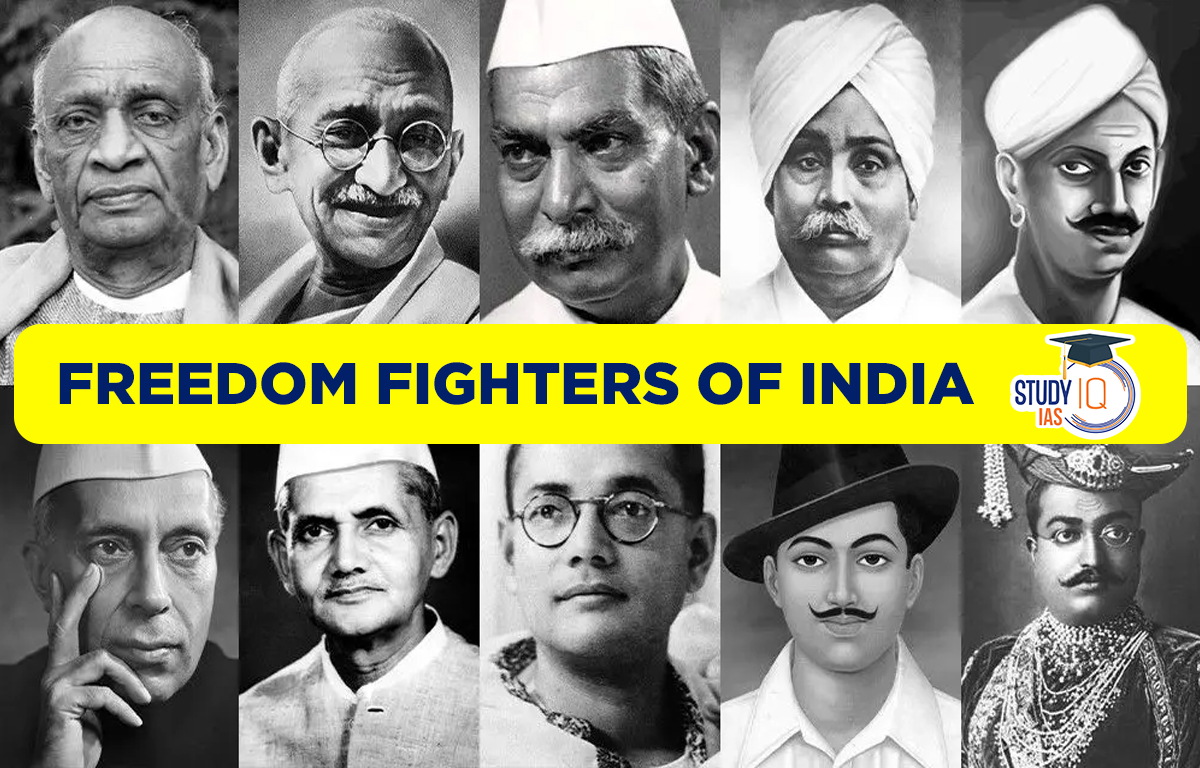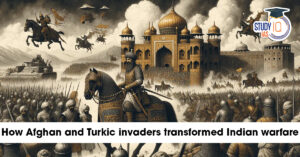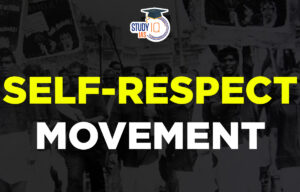Table of Contents
India’s struggle for independence from British rule was marked by the efforts and sacrifices of numerous freedom fighters, who came from diverse backgrounds and ideologies. Their constant fight, sometimes at the expense of their lives and individual freedom, established the basis of India’s independence on 15 August 1947, and their name lives on to inspire generations to maintain the virtues of justice, unity, and patriotism.
This article highlights some of the key Freedom Fighters of India and their contributions during this critical period in Indian history.
Freedom Fighters of India
India’s fight for freedom from British colonialism was a torturous one, forged by the bravery and sacrifice of thousands of freedom fighters. These freedom fighters came from all walks of life and geography and used an array of tactics to battle the power of the British Empire. The freedom fighters of India were courageous individuals who dedicated their lives to liberating the nation from British colonial rule.
From Mahatma Gandhi’s vision of non-violent resistance and civil disobedience to the revolutionary fervour of leaders such as Subhas Chandra Bose and Bhagat Singh, the movement was a collection of various ideologies bound together by one aim: Swaraj, or self-governance. Icons like Sardar Vallabhbhai Patel, who integrated a fractured country, and Dr. B.R. Ambedkar, who struggled for social justice and equality, played equally instrumental roles, making the fight for freedom a political, social, and economic one as well. Together, their efforts, sacrifices, and unshakeable will gave birth to the sovereign, democratic, and secular Republic of India.
Role of Freedom Fighters in India
The freedom fighters of India played a crucial role in the country’s journey to independence from British colonial rule. These brave individuals came from diverse backgrounds and united to fight for a common cause: to free India from oppression. Let’s explore their contributions in a simplified manner.
1. Early Resistance (Before 1857)
Before the major uprising, several regional leaders fought against British expansion. Notable figures like Veerapandiya Kattabomman and Tipu Sultan resisted British control in South India, inspiring future generations to stand against colonial rule.
2. First War of Independence (1857)
The Indian Rebellion of 1857 was the first large-scale uprising against British rule. Leaders like Mangal Pandey, Rani Laxmi Bai, and Bahadur Shah Zafar emerged as prominent figures. Though the rebellion was suppressed, it ignited a spirit of nationalism and set the stage for future struggles.
3. Moderate and Extremist Movements (Late 19th Century)
During this period, two main approaches emerged:
- Moderates: Leaders like Dadabhai Naoroji and Gopal Krishna Gokhale sought reforms and greater self-governance through the Indian National Congress (INC), formed in 1885.
- Extremists: Figures like Bal Gangadhar Tilak and Bipin Chandra Pal advocated for more direct action and complete independence from British rule.
4. Gandhi and Non-Violent Movements (Early 20th Century)
Mahatma Gandhi introduced the idea of non-violent resistance, which became the hallmark of the independence movement. Key events included:
- Champaran and Kheda Satyagraha (1917-1918)
- Non-Cooperation Movement (1920-1922)
- Salt March (Dandi March) (1930)
- Quit India Movement (1942)
Gandhi’s methods of Satyagraha (truth and non-violence) encouraged mass participation from people across the country.
5. Revolutionary Movements
Alongside Gandhi’s peaceful protests, some freedom fighters believed in armed resistance. Leaders like Bhagat Singh, Chandra Shekhar Azad, and Subhas Chandra Bose took more militant approaches, aiming to confront the British directly. Bose famously raised the slogan “Give me blood, and I will give you freedom!” and formed the Indian National Army (INA) to fight against British forces.
6. Unity and Mass Movements
The freedom struggle saw people from various regions, religions, and backgrounds unite. Leaders like Sardar Vallabhbhai Patel worked hard for a united India, while women like Sarojini Naidu and Sucheta Kriplani played vital roles, inspiring many others to join the fight.
7. Post-World War II and Final Struggle
After World War II, the British Empire weakened, and calls for independence grew louder. The INA trials and the Naval Mutiny of 1946 showed that the British could no longer maintain control. The Quit India Movement in 1942 left a significant impact, leading to negotiations for independence, which was achieved on August 15, 1947.
List of Freedom Fighters of India and Their Contribution
India’s freedom struggle was a long and arduous journey, with many brave men and women sacrificing their lives for the cause. Here are some of the most notable freedom fighters of India from 1857 to 1947 with their contributions:
| Freedom Fighters Name | Contributions |
| Mahatma Gandhi |
|
| Dr. B R Ambedkar |
|
| Dr. Rajendra Prasad |
|
| Sardar Vallabhbhai Patel |
|
| Jawaharlal Nehru |
|
| Bhagat Singh |
|
| Rani Gaidinliu |
|
| Pingali Venkayya |
|
| Rani Laxmi Bai |
|
| Veerapandiya Kattabomman |
|
| Mangal Pandey | Indian Rebellion of 1857 |
| Bakht Khan | Indian Rebellion of 1857 |
| Chetram Jatav | Indian Rebellion of 1857 |
| Bahadur Shah Zafar | Indian Rebellion of 1857 |
| Begum Hazrat Mahal | Indian Rebellion of 1857 |
| Asaf Ali | Indian National Movement |
| Ashfaqulla Khan | Kakori Conspiracy |
| Manmath Nath Gupta | Kakori conspiracy |
| Rajendra Lahiri | Kakori conspiracy |
| Sachindra Bakshi | Kakori conspiracy |
| Ram Prasad Bismil | Kakori conspiracy |
| Roshan Singh | Kakori conspiracy |
| Jogesh Chandra Chatterjee | Kakori conspiracy |
| Annie Besant | She Starting the Home Rule Movement |
| Bagha Jatin | The Howrah-Shibpur Conspiracy case |
| Kartar Singh Sarabha | Lahore conspiracy |
| Basawon Singh (Sinha) | Lahore conspiracy case |
| Senapati Bapat | He was the leader of the Mulshi Satyagraha |
| Bhikaji Cama | Unfurled the Indian flag at the International Socialist Conference at Stuttgart in Germany, 1907 |
| Kanaiyalal Maneklal Munshi | He was the founder of Bharatiya Vidya Bhavan |
| Tirupur Kumaran | He was the founder of the Desa Bandhu Youth Association |
| Lakshmi Sahgal | He was an Officer in the Indian Army |
| Parbati Giri | She is also known as Mother Teresa of Western Orissa. |
| Kanneganti Hanumanthu | Palnadu Rebellion |
| Alluri Sitarama Raju | Rampa Rebellion 1922-1924 |
| Sucheta Kriplani | She was the Chief Minister of an Indian state (UP). She was also the founder of the All India Mahila Congress in 1940. She sang Vande Mataram in the Constituent Assembly on 15th August 1947 |
| Bhavabhushan Mitra | Involved in the Ghadar Movement |
| Chandra Shekhar Azad | He reorganised the Hindustan Republican Association under its new name Hindustan Socialist Republican Association (HSRA) after the death of its founder. |
| Subhas Chandra Bose | He was twice elected President of the Indian National Congress. The INA revealed Subhash Bose’s greatness as a military leader and an organiser. (He was not the founder of the INA). |
| Chittaranjan Das | Leader in the Non-Cooperation Movement from Bengal and Founder of the Swaraj Party |
| Prafulla Chaki | Involved in the Muzaffarpur killing |
| Khudiram Bose | Involved in the Muzaffarpur killing |
| Madan Lal Dhingra | He did the assassination of Curzon Wyllie |
| Surya Sen | He is said to be the mastermind of the Chittagong Armoury raid |
| Pritilata Waddedar | Pahartali European Club attack |
| Rash Behari Bose | Indian National Army |
| Shyamji Krishna Varma | Founder of the Indian Home Rule Society, India House and The Indian Sociologist in London. |
| Subodh Roy | Involvement in the Tebhaga Movement |
| Tanguturi Prakasam | The first chief minister of the new Andhra state, created by the partition of Madras State along linguistic lines. |
| Ubaidullah Sindhi | Engagement in Silk Letter Conspiracy |
| Vasudev Balwant Phadke | He was Deccan Rebellion |
| Vinayak Damodar Savarkar | One of the leading figures of the Hindu Mahasabha and the formulator of Hindu Nationalist Philosophy |
About Freedom Fighters of India: Explained
India gained independence from British rule on August 15, 1947, a significant day that occurred almost 75 years ago. It was the result of several movements and conflicts that raged all through the period of British administration, including the famous uprising of 1857.
Many revolutionary Indian freedom fighters, including Mahatma Gandhi, Jawaharlal Nehru, Chandra Shekhar Azad, Rani Lakshmi Bai of Jhansi, and others, took the initiative in organising the campaign that resulted in India’s independence, which was attained thanks to their efforts. The Indian freedom fighters who gave their lives to guarantee India’s independence are featured on this site.
Mahatma Gandhi (1869 – 1948)
Mahatma Gandhi, real name Mohandas Karamchand Gandhi, was born on 2nd October 1869 at Porbandar. The immense sacrifices that Mohandas Karamchand Gandhi made for India earned him the title of “Father of the Nation.” Along with inspiring numerous other independence and human rights movements worldwide, he helped lead India to independence and played a significant role in its victory. He thought nonviolent resistance and an unwillingness to cooperate with the British would be enough to bring about independence.
Therefore, he organised and led three significant movements:
- Ahmedabad mill strike in 1918,
- Kheda Satyagraha in 1918
- Champaran Satyagraha in 1917
- He founded the Satyagraha Sabha in 1919 in opposition to the Rowlatt Act, which he called the “Black Act.”
- He began the Non-Cooperation movement in 1920 to win Purna Swaraj and self-rule.
- In 1930, he organised the Salt Satyagraha, popularly known as the Dandi March, to protest against the salt law.
- He started the Quit India Movement in 1942 at the All India Congress Committee meeting in Mumbai after the defeat of the Cripps Mission.
Subhas Chandra Bose (1897 – 1945)
One of the most successful Indian nationalists in history was Subhash Chandra Bose. He was born in Cuttack on January 23, 1897. He was widely referred to as Netaji. He was a fervent nationalist, and his unwavering patriotism made him a hero. Bose belonged to the radical faction of the Indian independence movement. He served as the head of a radical young wing of Congress from the beginning of the 1920s to the end of 1930. He is believed to have died in an aviation accident on August 18, 1945, although the cause of his passing is still unknown.
Bhagat Singh (1907 – 1931)
Bhagat Singh was born in Banga, Pakistan, on September 28, 1907. Singh was among the most extreme Indian liberation fighters. He was a divisive but respected figure in the freedom struggle for India. His involvement in a plot to assassinate James Scott, a British police superintendent, in 1928, as vengeance for Lala Lajpat Rai’s demise, was revealed. On March 23, 1931, the British executed this heroic Indian Freedom Fighter by hanging him at Lahore Central Jail in Lahore, Pakistan, when he was only 23 years old at the time. He is well known by the name Shaheed Bhagat Singh.
Mangal Pandey (1827-1857)
Mangal Pandey, a well-known Indian freedom fighter who was born on July 19th, 1827, is frequently seen as the forerunner of India’s first war for independence, the 1857 uprising against the British. As a soldier in the 34th Bengal Native Infantry regiment of the East India Company‘s army, he led the Sepoy rebellion that ultimately resulted in the 1857 uprising. In anticipation of a Sepoy uprising, British officers killed him on April 8, 1857, at Barrackpore, ten days early.
Jhansi ki Rani Laxmi Bai
On November 19, 1828, the Queen of Jhansi, Rani Laxmibai, was born in Varanasi. She goes by the stage name Manu and goes by the name Manikarnika Tambe. She was one of the most tenacious soldiers in the Revolutionary War. She inspired numerous Indian women to fight for their country’s freedom, and she still inspires women to defend their rights today. She defended her fortress with her infant child when British troops invaded it in 1858. On June 18, 1858, in Gwalior, she perished in the Battle against a Huge Rose.
Jawaharlal Nehru (1889 – 1964)
Jawaharlal Nehru joined the Annie Besant-led Home Rule League movement in 1916. He was a close associate of Mahatma Gandhi. He was detained multiple times during the struggle for freedom, and between 1921 and 1945, he spent a total of 9 years behind bars. He was an active member of the United Province’s Non-Cooperation movement, was its leader, and participated in the salt satyagraha. While the Indian National Congress desired dominion status, Jawaharlal Nehru and Subash Chandra Bose believed that the Indian National Congress’s ultimate goal should be complete independence or Poorna Swaraj. He became India’s first prime minister on 15 August 1947
Lala Lajpat Rai (1865 – 1928)
Lala Lajpat Rai was born on 28 January 1865, in Dhudike. He is also known as Punjab Kesari. He joined the Indian National Congress, established the Dayanand Anglo-Vedic School in Lahore in 1885, and was one of the founding members of the Punjab National Bank, which was founded in 1894. He established the Indian Home Rule League of America in New York in 1917. He established the Servants of People Society in Lahore in 1921 to recruit and educate native missionaries to serve their country. He participated in demonstrations against the Jallianwala Bagh Massacre, the Rowlatt Act, and the Partition of Bengal.
Bal Gangadhar Tilak (1856 – 1920)
Bal Gangadhar Tilak was a founding member of the Indian National Congress’s hardline wing, along with Lala Lajpat Rai and Bipin Chandra Pal. He started the Ganeshotsav and Shivaji Utsav celebrations in 1894, spreading nationalism among the populace through these two celebrations. Through the two publications he founded, Mahratta (English) and Kesari (Marathi), he promoted the cause of national freedom and educated Indians about their illustrious past and rich cultural legacy. We introduced the Trisutri three-point agenda for national awakening, which stands for Swaraj, Swadeshi, and National Education.
Jyotiba Phule (1827 – 1890)
Jyotiba Phule founded India’s first girls’ school in August 1848, located in Tatyasaheb Bhide’s home. Later, he opened two additional schools for girls and people from lower castes (Mahars and Mangs). He was an early supporter of women’s education in India because he thought that only education could alleviate social injustices. He founded the Satyashodhak Samaj (Society of Truth-Seekers) in 1873 to enhance the social rights and political access of the less fortunate segments of society.
Dadabhai Naoroji (1825 – 1917)
Together with Indians and retired British officers in London, he established the East India Association in 1866. The organisation advocated for Indians under British rule and brought up issues for consideration. Dadabhai Naoroji’s book, Poverty and Un-British Rule in India, which exposed the economic exploitation of India by the British, was his most significant contribution. He opposed the 1878 Vernacular Press Act. He supported the inclusion of Indians in the House of Commons and the Indianization of bureaucracy.
Sardar Vallabhbhai Patel (1875 – 1950)
Vallabhbhai Jhaverbhai Patel, also known as Sardar Vallabhbhai Patel, was born on 31 October 1875 in Nadiad. He was the first deputy prime minister and minister of home affairs in India. He is famously known by Sardar title for his work in the Bardoli Satyagraha on behalf of his nation. He became the Gujarat Sabha, an organisation that later evolved into the Gujarati branch of the Indian National Congress. He launched the Kheda Satyagraha in Gujarat in 1918. It was against the British government, which imposed excessive agricultural taxation during the famine.
Motilal Nehru (1861 – 1931)
Motilal Nehru was born on 6 May 1861 at Prayagraj. He was an Indian lawyer, activist, and politician affiliated with the Indian National Congress. He was elected president of the Congress party in 1919 and 1928. He founded the Home Rule League Movement with Annie Besant in 1916. He joined the Non-Cooperation Campaign in 1919. In the same year, he established an independent newspaper based in Allahabad. Swaraj Party, founded by Motilal Nehru and Chitta Ranjan DAS, advocated for complete political independence and self-governance in India. In 1930, he was involved in the Salt Satyagraha and imprisoned for several months.
List of Women Freedom Fighters in India
India has been home to numerous courageous and inspiring women freedom fighters who played pivotal roles in the country’s struggle for independence from British colonial rule. Here is a list of some prominent women freedom fighters in India. For a complete List of Women Freedom Fighters of India, check the given link.
Sarojini Naidu
- She was also referred to as the “Nightingale of India” and was a renowned poet, independence warrior, and orator.
- In 1925, she was chosen to lead the Indian National Congress.
- She advocated for the Quit India Movement and the Khilafat Movement (Indian Disobedience).
Madam Bhikaji Cama
- She unfurled the first Indian National Flag in 1907 in Germany at the International Socialist Conference.
Begum Hazrat Mahal
- She also went by the name “Begum of Awadh” and was a key player in India’s First Independence War (1857-58).
- In the Revolt, she collaborated with Nana Saheb, Tantia Tope, and others.
- The Indian government released a stamp in 1984 to honour the Begum Hazrat Mahal.
Aruna Asaf Ali (1909-1996)
- Aruna participated in open marches during the Salt Satyagraha and was a committed member of the Congress Party.
- She was the editor of the Indian National Congress’ monthly publication “In-Qilab.“
- She is referred to as the Independence Movement’s Grand Old Lady.
- During the Quit India Movement, she is renowned for raising the flag of the Indian National Congress in Bombay.
Annie Besant (1847-1933)
- She joined the Indian National Congress and was active in political and educational endeavours in India. She was a distinguished Theosophical Society member from Ireland.
- She served as the Congress’s first female president.
- She founded the Indian Home Rule Movement in 1916.
- She founded the “New India” newspaper.
- She founded several institutions and schools, such as the Central Hindu College High School in Banaras (1913).
Kasturba Gandhi (1869-1944)
- Satyagraha. Kasturba Mohandas Gandhi, famously known as Kasturba Gandhi, was the wife of Mohandas Karamchand Gandhi.
- She joined with Indigo workers in Champaran, Bihar, in the No Tax Campaign and the Rajkot Satyagraha and was a leader of the Women’s.
- She was a committed advocate for women’s rights and social reform, such as women’s education, health, and economic empowerment.
Kamala Nehru (1899 -1936)
- Kamala Nehru, Jawaharlal Nehru’s wife, was active in the freedom movement
- She helped to organise parades, picket liquor and foreign clothing stores, and organise the United Provinces No Tax Campaign.
Vijaya Lakshmi Pandit (1900-1990)
- She was the president of the Congress Party and the daughter of Motilal Nehru.
- She joined the Non-Cooperation Movement to challenge British dominance.
- She was detained both in 1940 and 1942, both times during the Quit India Movement.
- Following India’s independence, it represented at numerous international conventions.
Challenges Faced by Freedom Fighters during the Indian Freedom Struggle
The freedom fighters of India faced several challenges, including:
- British Repression: The British government was ruthless in its suppression of the Indian independence movement. Freedom fighters were often arrested, tortured, and killed. The British also used several other repressive measures, such as the Rowlatt Act and the Defence of India Act, to stifle dissent.
- Internal Divisions: The Indian independence movement was divided into different factions, which sometimes made it difficult to achieve unity and coordination. Some factions believed in non-violent resistance, while others believed in armed resistance. There were also divisions between different religious and caste groups.
- Social and Economic Problems: India was a poor and underdeveloped country, which made it difficult to mobilize the people and sustain the independence movement. Many Indians were illiterate and impoverished, and they were more concerned with their everyday survival than with politics.
- Lack of International Support: The Indian independence movement did not receive much international support in the early years. The British were a powerful and influential country, and many other countries were reluctant to support a movement that could challenge British rule.


 Birsa Munda Birth Anniversary 2025: Life...
Birsa Munda Birth Anniversary 2025: Life...
 Military Innovations of Afghans and Turk...
Military Innovations of Afghans and Turk...
 Self-Respect Movement, History, Objectiv...
Self-Respect Movement, History, Objectiv...

























